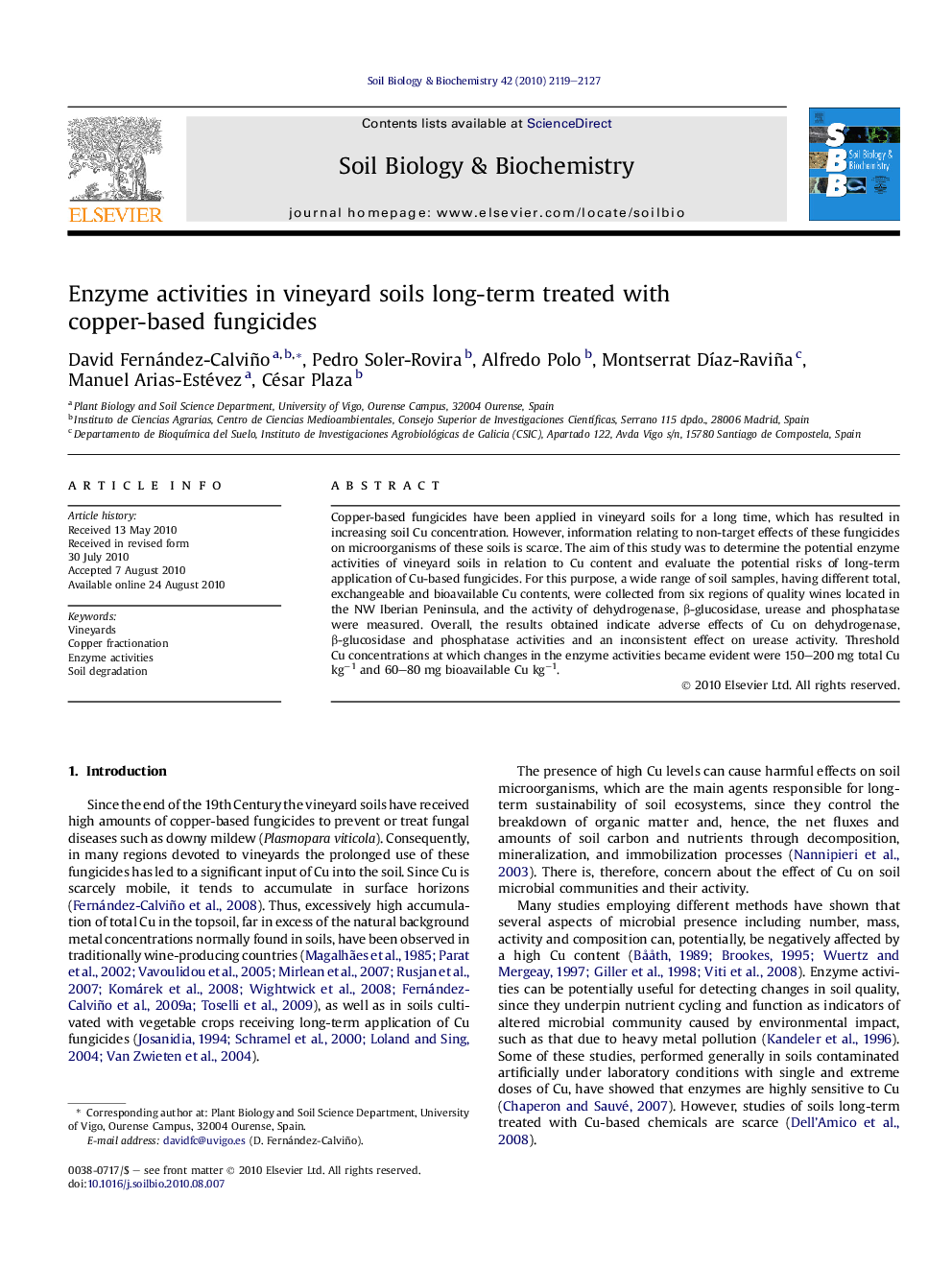| Article ID | Journal | Published Year | Pages | File Type |
|---|---|---|---|---|
| 2025365 | Soil Biology and Biochemistry | 2010 | 9 Pages |
Abstract
Copper-based fungicides have been applied in vineyard soils for a long time, which has resulted in increasing soil Cu concentration. However, information relating to non-target effects of these fungicides on microorganisms of these soils is scarce. The aim of this study was to determine the potential enzyme activities of vineyard soils in relation to Cu content and evaluate the potential risks of long-term application of Cu-based fungicides. For this purpose, a wide range of soil samples, having different total, exchangeable and bioavailable Cu contents, were collected from six regions of quality wines located in the NW Iberian Peninsula, and the activity of dehydrogenase, β-glucosidase, urease and phosphatase were measured. Overall, the results obtained indicate adverse effects of Cu on dehydrogenase, β-glucosidase and phosphatase activities and an inconsistent effect on urease activity. Threshold Cu concentrations at which changes in the enzyme activities became evident were 150-200 mg total Cu kgâ1 and 60-80 mg bioavailable Cu kgâ1.
Related Topics
Life Sciences
Agricultural and Biological Sciences
Soil Science
Authors
David Fernández-Calviño, Pedro Soler-Rovira, Alfredo Polo, Montserrat DÃaz-Raviña, Manuel Arias-Estévez, César Plaza,
